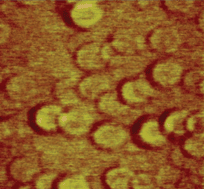Molecular aggregations and supramolecular architectures of amphiphilic PEO17–OPV3 and its hybrid with silica
Abstract
The synthesis, luminescence properties and

* Corresponding authors
a
Department of Materials Science and Engineering, National Taiwan University, Taipei, Taiwan, Republic of China
E-mail:
kflin@ccms.ntu.edu.tw
Fax: +886 2 2363 4562
Tel: +886 2 2392 8290
The synthesis, luminescence properties and

 Please wait while we load your content...
Something went wrong. Try again?
Please wait while we load your content...
Something went wrong. Try again?
C. Hsieh and K. Lin, J. Mater. Chem., 2005, 15, 4154 DOI: 10.1039/B503393D
To request permission to reproduce material from this article, please go to the Copyright Clearance Center request page.
If you are an author contributing to an RSC publication, you do not need to request permission provided correct acknowledgement is given.
If you are the author of this article, you do not need to request permission to reproduce figures and diagrams provided correct acknowledgement is given. If you want to reproduce the whole article in a third-party publication (excluding your thesis/dissertation for which permission is not required) please go to the Copyright Clearance Center request page.
Read more about how to correctly acknowledge RSC content.
 Fetching data from CrossRef.
Fetching data from CrossRef.
This may take some time to load.
Loading related content
